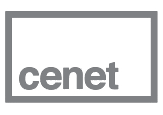
About
Supporting Research & Innovation in the U.S.
What is the STEM Research Initiative and ResearcherUSA.com?
The STEM Research Initiative is part of the U.S. Department of State’s Exchange Visitor Program. Allowing global experts to stay in the U.S. for up to five years, this program helps facilitate meaningful collaboration between U.S.-based companies, institutions and foreign nationals involved in research and development to leverage exchange of ideas and fuel innovation worldwide.
Whether information is sought by employers, lawyers, international STEM experts, recent graduates of STEM degree programs, state, local or federal government actors, multilateral organizations, universities, or others – the ResearcherUSA.com site provides a “one-stop shop” on the STEM Research Initiative, including resources directly from the U.S. Department of State’s own FAQs.
Sponsoring Organizations
The researcherusa.com site was developed by a group of nonprofit exchange visitor program sponsors looking to better ensure access to fulsome information about how the STEM Research Initiative can be utilized by U.S. companies of every size, geography, and sector.
Goals for the STEM Research Initiative:

Foster stronger global collaboration

Increase mutual understanding between U.S. citizens and citizens of other countries

Improve competitiveness

Support an increase in science, technology, engineering, and mathematics (STEM) students, professionals, and exchange visitors on educational and cultural exchange programs in the United States

Bring fresh ideas, perspectives, and approaches to:
- U.S.-based companies and their employees
- U.S. institutions and their scholars, researchers, and faculty
- Innovation hubs and incubators
- The nation’s innovation ecosystem
Why STEM Research Initiative?
In 2022, the U.S. Department of State’s Bureau of Educational and Cultural Affairs announced the STEM Research Initiative. Working in collaboration with designated program sponsors, the initiative was designed to support U.S. companies and institutions interested in hosting J-1 visa exchange visitors in STEM fields to add a global perspective to STEM R&D being conducted by private businesses across America.
The STEM Research Initiative was initially devised by the State Department in collaboration with the White House Office of Science and Technology Policy based on the recognition that when people come to the United States to study, to take part in science and technology endeavors, and to build ties between cultures and countries, this benefits America and Americans.


The STEM Research Initiative was designed to create opportunities for companies to broaden networks and tap into the global marketplace of talent, and to allow U.S. businesses of any size to work with people who bring a different lens, different background, and different perspective. Leveraging the existing J-1 Research Scholar program and existing regulations governing that program, the initiative was developed as a way to expand eligibility and remove barriers to participation, so more U.S. organizations could benefit.
One of America’s greatest competitive advantages is its ability to attract innovators and entrepreneurs from all over the world. By making key policy changes and establishing the STEM Research initiative, the United States has successfully carved out new avenues for businesses and institutions to connect with talented global researchers and other highly skilled individuals in STEM fields.


Participate in the STEM Research Initiative
If you’re a U.S.-based company, institution, or a foreign researcher interested in participating in the J-1 STEM Research Initiative, find out how you can get started by selecting one of the participation categories below.
If you are a STEM participant, sign up at STEMTalentConnect.com to start your journey.
FAQs from State Department
Want to read other user-specific FAQs?
Academic sponsors want to utilize the STEM initiative to place academic exchange visitors off campus and are very interested in creating partnerships with local STEM businesses. Can the Department provide an example of a third party agreement?
Only certain categories of BridgeUSA regulations establish requirements for third-party agreements when placing exchange visitors off campus, most notably for Trainees and Interns as contained at 22 CFR 62.22(g) and for College and University Students (student interns) at 22 CFR 62.23(i).While not required for categories other than Intern, Trainee and College and University Student (student intern), the Department refers sponsors to the requirements of the Form DS-7002 as an example for both assessing third-party organizations and an agreement that accurately outlines expectations for all parties for an off-campus placement.By way of example, in addition to any applicable requirements outlined in the regulations for a specific category of exchange visitor, a written agreement might include the following:Full description of position, title, duties, compensation (if any), location, dates, time commitment, how the program is related to the subject field listed on exchange visitor’s Form DS-2019, and the goals and objectives of the placement.Host organization information, including legal business name; a brief summary of the company’s goals and products and/or services it offers; and site location information, including an up-to-date physical address of the business.Expectations for host organization cooperation, including:Notification of the university sponsor promptly when participants arrive at the site to begin their exchange visitor program, when there are any changes or deviations to the program objectives, when exchange visitors are not meeting the requirements of their placements, or when exchange visitors leave their program 30 days or more ahead of their program end date.Contacting the university sponsor immediately in the event of any emergency involving exchange visitors or any situations that impact their health, safety, or welfare.Acknowledgement that the intent of the Exchange Visitor Program is to allow the exchange visitor to enhance skills and gain exposure to U.S. culture and business prior to returning home upon completion of the program.Commitment to contact the sponsor at the earliest available opportunity regarding any concerns, changes in, or deviations from this agreement.Responding in a timely way to all inquiries and monitoring activities of the sponsor.Commitment to adhere to all applicable regulations, terms, and conditions that govern the placement.As a best practice, and keeping in mind the general obligations of sponsors contained at 22 CFR 62.9 and 62.10, sponsors should also:Establish a monitoring plan for the duration of the exchange visitor’s placement by, for example,‚ÄØidentifying point of contacts, having protocols for reporting, planning for check-ins, and having a way to resolve any conflicts or issues that arise.Evaluate the exchange visitor’s performance and the host organization post-program.Offer host organizations an introduction to the Exchange Visitor Program to ensure they’re provided with accurate information and materials with respect to the objectives of the program and the nature and importance of the cultural components. Sponsors should emphasize the distinction between work-based learning, which is permitted, and ordinary employment or unskilled labor, which is not.Finally, before making the placement, and again keeping in mind the sponsor’s obligations under 22 C.F.R. 62.9 and 62.10 as well as any category-specific obligations and requirements, sponsors should:Assess whether host organizations will be a good match for an exchange visitor (e.g., by determining that the necessary infrastructure is in place to host and support an exchange visitor during their program). Host organizations also must show that their field of research or proposed work-based training plan aligns with the prospective exchange visitor’s program objective on their Form DS-2019.Ensure that the host organization possesses and maintains the ability, personnel, and resources to provide structured and guided work-based training, internship, and/or collaborative research experiences that achieve the goals and objectives of the Exchange Visitor Program.
Are candidates who possess Masters, and sometimes Bachelors, level STEM degrees qualified for the J-1 Research Scholar category and STEM Initiative?
Yes, 22 CFR 62.20(d) does not establish minimum education requirements nor preclude applicants with master’s and/or bachelor’s degrees from participating in the J-1 Research Scholar category.
Are there new regulations or additional requirements expected of sponsors who want to participate?
The placement of Professors and Research Scholars, Short-term Scholars, College and University Students (academic training), Student Interns, and Specialists off campus at appropriate host organizations (e.g., STEM businesses) is permitted by current regulations.BridgeUSA may, at its discretion, conduct a site visit to ensure that program requirements are being met, including that the host organization possesses and maintains the ability, personnel, and resources to provide structured and guided work-based training experiences that achieve a program’s stated goals and objectives.
As an academic institution and a J-1 sponsor, can a private business ask our institution to issue a Form DS-2019 on their behalf for an EV, even though they might not have an affiliation with our university?
Yes. Current BridgeUSA regulations allow a diverse spectrum of private sector organizations and businesses to host exchange visitors, including those in academic categories, e.g., Research Scholar. BridgeUSA sponsors remain responsible for the identification and placement of exchange visitors at reputable host organizations that offer exchange visitors quality training and/or research opportunities, and for ensuring the placements meet the regulatory requirements for specific categories.
As sponsors seek to pursue placements outside of traditional academic environments, some questions have arisen regarding the suitability of those placements. Can the Department elaborate on the appropriate duties of J-1 Research Scholars placed in private STEM-focused businesses?
As defined in 22 CFR 62.4(f), regardless of program length, research scholar activities may include research, lecturing, observing, consulting at research institutions, corporate research facilities, etc.Research scholars are expected to be able to share their expertise and perspectives through the provision of lecturing/teaching/training or consulting. While there will be some on-boarding of scholars and training in the context of learning about the operation of their hosting organizations, they should not be recipients of continuous training, which is more appropriate for other types of exchange visitor placements, such as the Intern and Trainee category. Exchange visitor research should be collaborative in nature, and any training to help prepare a scholar for a successful exchange should be incidental.Testing, preparing data for review; liaising between departments; and general laboratory duties‚ including the preparation of samples, operating and maintaining lab equipment, and keeping records of experimental results‚ are all considered appropriate duties by the Department.













